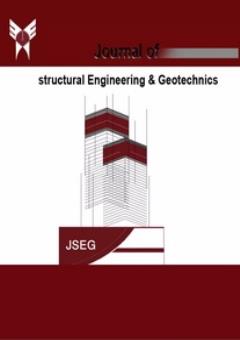The Effect of Soccer Ball Impulse on Lower Limbs of the Human Body
محورهای موضوعی : Structural Engineering
Leila Shahryari
1
,
Behtash JavidSharifi JavidSharifi
2
![]() ,
Mohammad Ali Samianifar
3
,
Mohammad Ali Samianifar
3
1 - Associate Professor, Islamic Azad University, Shiraz Branch
2 - Design & Development Department, Fars Regional Electric Company (FREC), Shiraz, Iran
3 - Department of Civil Engineering, Shiraz Branch, Islamic Azad University, Shiraz, Iran
کلید واژه: Finite Element Modeling, Sport Biomechanics, Ball Impulse, Standard Ball,
چکیده مقاله :
Despite the fact that soccer is one of the most popular sports in the world, little attention has been paid to this game scientifically which could otherwise provide a broad range of interesting outcomes. Sport equipment has a significant effect on how a game is played. Different features of the soccer ball such as its size, structure, weight and potential incoming pressure also affect the nature and quality of the game. Different models of soccer balls have been developed with the aim of increasing game quality and performance. Many scholars have investigated the displacements during typical soccer games caused by the ball impulse and the feet, but few studies have focused on the interaction between the ball and the feet. The aim of the present study is, thus, to investigate tension development and possible deformations caused by kicking the ball. Players who are well aware of soccer rules and have a little knowledge about soccer-induced injuries easily realize that the impulse of a non-standard ball considering its material, size or weight may severely damage the knees or other body parts. Due to the importance of the issue, to evaluate the impact of the soccer ball on the footballer’s feet, two finite element models of typical soccer balls have been studied with respect to the standard features of the real soccer ball in the three layers of leather, thread and rubber. The first model is proportional to the mass of the standard ball and the second incorporates a mass less than the standard level. Two models of bones are used in the present study: a single layer bone and a two-layer bone with cortical and cancellous tissues. For better understanding of the injuries resulting from the impulse from a non-standard ball, the used finite element software employs mechanic laws of sport biomechanics to provide better understanding of the details using mathematical modeling, computer simulation and experimental measurements. In this regard, this significant point is achieved through modeling the ball impulse to the feet which is quite complex and needs some simplification. As the soccer ball is flexible, most of the force is absorbed by the model’s flexibility. In the other model with a less flexible ball, the force absorbed by the bone is significantly more.


